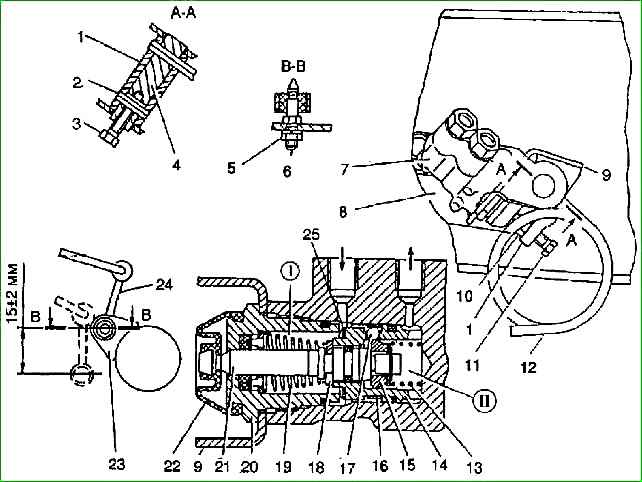After the first 2500 km and during maintenance-2, and also if the rear wheels of a loaded vehicle lock up earlier than the front wheels or much later when braking on a dry hard surface, you should make sure that the regulator is adjusted correctly
The regulator should be adjusted in the following order:

- - disconnect the lower end of the regulator strut 24 from bracket 23 (see Fig. 1) on the rear axle by unscrewing the axle nut 5 to do this;
- - unscrew locknut 10 a few turns and, rotating adjusting bolt 11, set distance C:
- - for GAZ-2705 and GAZ-2705 “Combi” - 13-17 mm;
- - for buses - 28-32 mm between axle 6 and hole in bracket 23;
- - tighten the locknut, holding the adjusting bolt from turning;
- - secure the lower end of the rack to the rear axle bracket.
It is necessary to check the correct adjustment of the pressure regulator by braking until the wheels lock on a horizontal section of the road with a hard, dry surface at a speed of 50-60 km/h.
If the pressure regulator is in working order and correctly adjusted, during effective braking there should be some advance in the locking of the front wheels relative to the rear ones.
If the rear wheels lock before the front ones, then after first unscrewing the lock nut 10, unscrew the adjusting bolt 11 half a turn and lock it again.
If the front wheels lock much earlier than the rear wheels, you should tighten the adjusting bolt half a turn.
After performing the above operations, check the adjustment of the regulator again by braking on the road.
Also see the detailed article - “How to replace and adjust the brake force regulator of a Gazelle car”
It should be remembered that if the rear wheels are blocked ahead of time, the car may skid, and if the front brakes are blocked much earlier than the rear ones, then the car may lose control, especially when driving on a slippery road.





